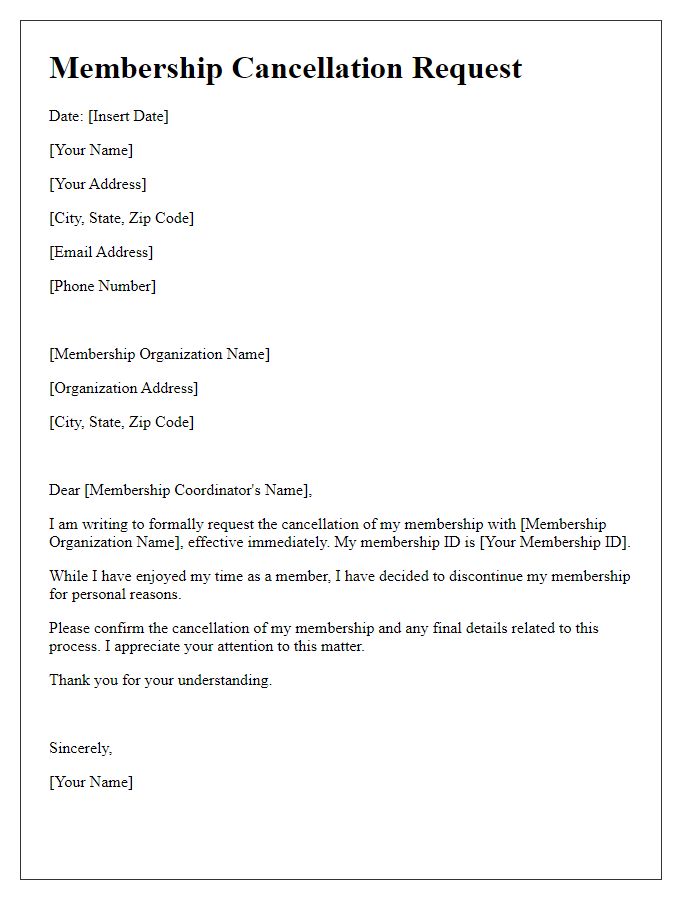Are you considering discontinuing a service but not sure how to communicate the change effectively? Writing a clear and respectful letter can make all the difference in maintaining a positive relationship with your clients or customers. In this article, we'll explore essential elements to include in your discontinuation letter, ensuring that your message is delivered with courtesy and professionalism. Dive in to discover our handy template and tips for this important communication!

Clear Reason Statement
Service discontinuation decisions often arise from various factors impacting business operations or customer satisfaction. In the case of a telecommunications company, for instance, declining customer usage rates illustrated by a 30% reduction over the past two years may prompt a review of service viability, leading to the conclusion that continued service provision is unsustainable. Additionally, market shifts, such as a 15% increase in competing service pricing, may further contribute to challenging profitability. An in-depth assessment of customer feedback revealing dissatisfaction with service quality could also signal the need for discontinuation. Clear communication regarding the end date of service operations, alongside alternative options for consumers, is critical for maintaining public trust and organizational integrity.
Specific Termination Date
The discontinuation of services, effective from the specified termination date of March 31, 2024, involves a systematic process within organizational parameters. Clients receiving services, such as IT support or consulting, will be notified promptly to ensure a smooth transition. This termination impacts ongoing projects, including software development initiatives, scheduled maintenance, and customer support operations. A formal communication will be sent to all affected parties, detailing the reasons for discontinuation, steps for transferring responsibilities, and contact information for final inquiries. The goal is to minimize disruption and ensure all stakeholders are informed well in advance of the closing date.
Service/Account Details
Discontinuation of services can result in various implications for both individuals and businesses. In managed services, the termination of an account, such as a software subscription, can impact access to critical data and features. For instance, a customer retention platform like Salesforce can disable features on the final day of service, affecting customer relationship management (CRM). Associated business operations may need to adjust, such as ensuring data migration or backup is completed before the cancellation date. Important customer notifications should be sent, highlighting the last billing cycle or providing instructions for account closure. Additionally, compliance with regulations like the General Data Protection Regulation (GDPR) may necessitate secure data deletion practices post-service termination. Timely communication regarding final transactions or potential reactivation options can lessen client confusion and maintain goodwill.
Return/Settlement Instructions
The termination of services often necessitates clear communication regarding return and settlement instructions. To ensure a smooth transition, clients should receive detailed information concerning the return of company property, such as equipment, devices, or documents. Clients should be instructed to return all items by a specified deadline, typically within 14 days of service discontinuation, to avoid additional charges. A designated return address should be provided, along with information on shipping options or in-person drop-off procedures, if applicable. Additionally, clients should be informed about the settlement of any outstanding balances or final invoices, including payment methods accepted, the deadline for payment, and possible late fees for overdue settlements. Clear and concise instructions will facilitate an efficient process, minimizing confusion or delays.
Contact Information for Queries
Discontinuation of services can lead to confusion among clients. Clear communication is essential. Provide concise contact information for queries, including a dedicated phone number (e.g., +1-800-555-0199) and email address (e.g., support@example.com) to facilitate prompt assistance. Ensure customer service representatives are available during specified hours (e.g., Monday to Friday, 9 AM to 5 PM EST) to address concerns and provide necessary support. Include links to relevant resources or FAQs on the company's website (e.g., www.example.com/faq) to guide clients through the transition process seamlessly.













Comments